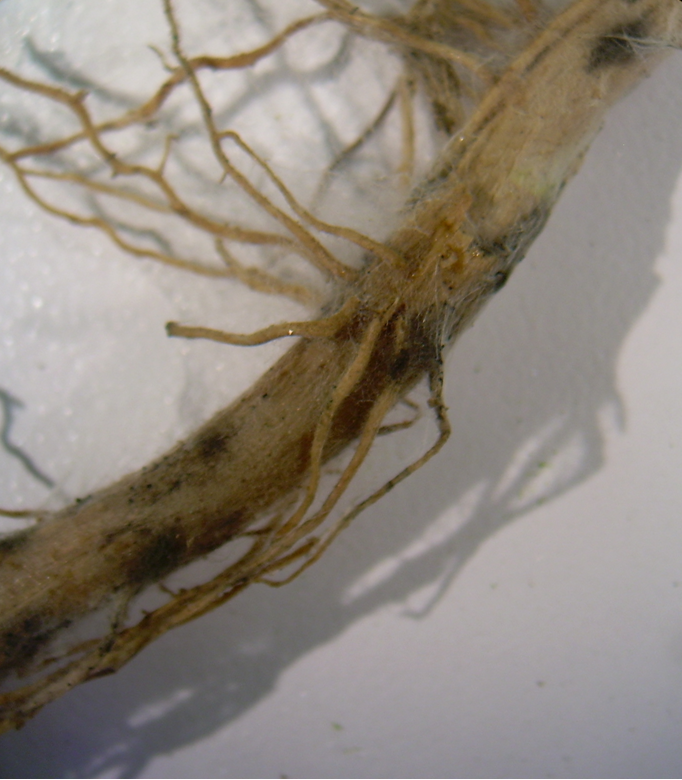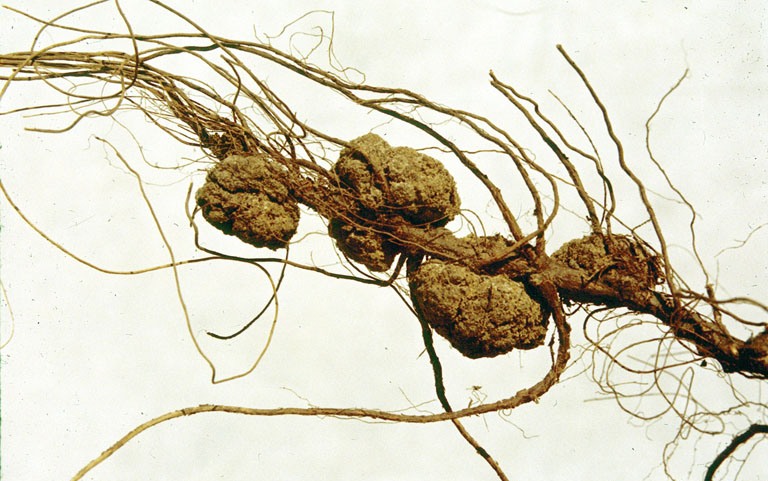
Friends and Foes of the Avocado
Honey
bees are the typical pollinator of avocado_pollinating_Avocado_cv%20wiki.jpg) flowers. Pollination
of avocado trees is very complex in comparison to most fruit
pollinations. The flowers of an avocado tree only open twice, two
days in a row. The first day the flower blossoms, the pistil, or
female reproductive part of the flower, extends from the flower and
is receptive to pollination. The second day the stamens, or male
reproductive parts of the flower, shed their pollen. This renders
the tree incapable of self pollination, because on the second day
the pistil is unable to receive pollen, therefore the tree must be pollinated by an outside source. If
the flower is not pollinated in this two day period, the flower will
close, not produce a fruit, and proceed to fall off of the tree. Because the pollination
of avocado trees is so specific, if the honey bee population
declines, avocado trees will face devastation in crop production. There
are many other wonderful plants pollinated by honey bees, including
cashews,
Anacardium occidentale; kiwifruit,
Actinidia deliciosa; and the paw paw,
Asimina triloba; that will also face devastation in crop
production due to a decrease in honey bee population.
flowers. Pollination
of avocado trees is very complex in comparison to most fruit
pollinations. The flowers of an avocado tree only open twice, two
days in a row. The first day the flower blossoms, the pistil, or
female reproductive part of the flower, extends from the flower and
is receptive to pollination. The second day the stamens, or male
reproductive parts of the flower, shed their pollen. This renders
the tree incapable of self pollination, because on the second day
the pistil is unable to receive pollen, therefore the tree must be pollinated by an outside source. If
the flower is not pollinated in this two day period, the flower will
close, not produce a fruit, and proceed to fall off of the tree. Because the pollination
of avocado trees is so specific, if the honey bee population
declines, avocado trees will face devastation in crop production. There
are many other wonderful plants pollinated by honey bees, including
cashews,
Anacardium occidentale; kiwifruit,
Actinidia deliciosa; and the paw paw,
Asimina triloba; that will also face devastation in crop
production due to a decrease in honey bee population.
Another example of a mutually beneficial relationship between the avocado and another organism is the endomycorrhizae. Endomycorrhizae is the infusion of a fungi, specifically a member of the Glomeromycota phylum, into the roots of the plant. This relationship benefits the plant by the transmission of nutrients in the soil from the fungi to the avocado. The fungi benefits by the avocado sharing the sugars produced by photosynthesis.
There are also negative interactions that avocado
trees have with other organisms.

A very large problem with avocado production is the parasitic fungus Phytophthora cinnamomi, which causes avocado root rot. Phytophtora cinnamomi is a fungi in the Oomycetes phylum. Other organisms infected by the root rot causing fungus are the Camilla trees, Camellia sinensis; Juniper trees, Juniper communis L.; and Spruce trees, Picea abies. Signs of the avocado root rot include small, wilting, brown leaves. Also a decrease in fruit production or a stable amount of fruit production, yielding smaller fruits. The fungus ultimately causes death of the avocado tree. There is current genetic research being done in attempts to hybridize avocados with resistance to Phytophthora cinnamomi, but so far there has been no success.
Another
negative interaction between avocados and other organisms is with
the relationship with the bacteria called
Agrobacterium
tumefaciens.

The bacteria causes large swellings on the avocado plants, typically near the soil. Agrobacterium tumefaciens has a particularly interesting interaction with avocados because it integrates part of the bacteria's DNA into the genome of the avocado tree, resulting in the tumor-like growth. The bacteria typically leads to a shortened breeding process and enables the avocado to pass the bacterial gene onto further progenies.
Next head on to the fun facts page to see if you already knew any of these interesting and surprising facts or head to the home page to start from scratch.